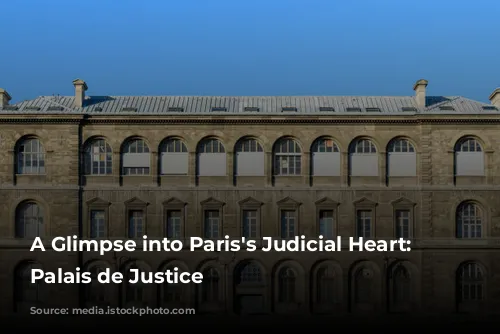The Palais de Justice, standing majestically on the Île de la Cité in Paris, is much more than just a courthouse. This imposing structure is a time capsule of French history, interwoven with legal battles, royal power struggles, and even the turbulent days of the French Revolution. It’s a place where justice is served, but also where the echoes of the past resonate strongly.
A Palace Fit for Kings, then Justice
The story of the Palais de Justice starts with the Palais de la Cité, a grand royal palace that once held sway over the city. King Robert II transformed the palace into a center of justice by creating the Hall of the King, where the Curia Regis, or King’s Council, gathered to advise the monarch. This royal council evolved into the Parlement of Paris, a powerful judicial body composed of the French nobility. As its influence grew, so did the need for a larger space. Philip IV answered this call by building the Grand Chamber, an enormous hall that became the heart of the Parlement.
From Royal Seat to Revolutionary Courtroom
The Parlement of Paris played a significant role in shaping French history. It acted as the court of appeal for royal tribunals, had authority over legal matters concerning the nobility, and even had the power to approve royal decrees. This gave the Parlement considerable power in the constant tug-of-war between the monarchy and the nobility.
The turbulent French Revolution swept across Paris, and the once-regal Grand Chamber became the stage for the Revolutionary Tribunal. This court, notorious for its swift trials and harsh sentences, sent countless individuals to the guillotine. The Reign of Terror, with its brutal justice, unfolded within these walls.

A Palace Transformed: From Destruction to Rebuilding
The 19th century saw a series of ambitious projects to reshape the Palais de Justice. After a period of neglect, Napoleon Bonaparte, during his reign, pushed for a grander, more imposing structure. This vision was brought to life by a succession of architects, each contributing to the palace’s transformation.
The ambitious project was struck by a devastating blow during the Paris Commune. In the chaos and bloodshed of the “Bloody Week,” arsonists set fire to the palace, reducing much of it to ruins. However, the spirit of the project prevailed, and the Palais de Justice rose from the ashes, a testament to the resilience of the French spirit.

A Modern Legal Hub: The Palais de Justice Today
The Palais de Justice stands today as a monument to the long and complex history of French justice. It is home to the Court of Appeal of Paris, the busiest appeals court in France, and the Court of Cassation, the country’s highest court for ordinary cases.
Though the old Conciergerie prison is now a historical site, the Palais de Justice still houses detention facilities, serving as a reminder of the ongoing struggle between law and order.
The Palais de Justice is a fascinating blend of history and modernity. It is a place where the past and present collide, and where justice continues to be served, echoing through centuries of history. This iconic Parisian landmark continues to stand as a symbol of the enduring strength of the French legal system.
